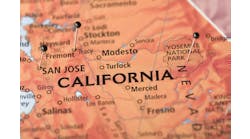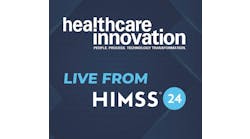At the start of the pandemic, electronic case reporting (eCR), which involves automatically sending data on reportable conditions from the clinical provider to the public health authority, was just getting off the ground. A June 30 webinar hosted by AMIA examined the progress since then, the role eCR played in responding to COVID-19, and how FHIR can lead to more sustainable approaches to eCR.
“In advancing electronic case reporting, we're automating the process and reducing burden on the healthcare sector. It reduces burden on the public health sector as well, because they can take that electronic data that they receive now and use it in a much more efficient way,” said Laura Conn, M.P.H., who serves as a senior advisor and acting team lead for the Electronic Case Reporting (eCR) Team in the Partnerships and Evaluation Branch (PEB) of CDC’s Division of Health Informatics and Surveillance. “We have rapidly accelerated the implementation of electronic case reporting across the country,” she added. “We have over 13,800 healthcare facilities now sending electronic case reports, primarily for COVID, because that was clearly the focus of the last couple of years. But we have a roll-out plan, and data on over 170 conditions can be sent using this electronic method. We are looking to expand both for organizations not yet doing electronic case reporting to come on board, and those that have been doing reporting for COVID to expand beyond COVID to more conditions.”
John Loonsk, M.D., is consulting chief medical informatics officer and electronic case reporting lead for the Association of Public Health Laboratories. He is also an adjunct associate professor in the Johns Hopkins University School of Medicine and the Johns Hopkins Bloomberg School of Public Health. Loonsk said he thinks of electronic case reporting as perhaps the mother of all informatics problems. The data are very desirable for public health, but there are legal and technical obstacles that have been in place for doing it. Public health has used things like lab results as a surrogate at times for case reports and to provide what information they have because labs were electronic, or they used “admission, discharge and transfer” data for syndromic surveillance because ADT systems were electronic. “But it's really only with the advent of the electronic health record that we've been able to develop both a technical architecture for electronic case reporting, as well as a policy architecture,” he said. “Both of these things together had been necessary to try to solve this complex informatics challenge.”
From a technical standpoint, electronic case reporting is running on a nationwide hub-and-spoke model, where many healthcare organizations are connected with many public health agencies using HL7 standard documents through a shared services hub, Loonsk explained. “We use standards for transport as well, XDR and direct secure transport. We partner with health information networks to add the policy pieces of this as well. What this hub-and-spoke model really enables is a single interface, a single point of connection for healthcare organizations and EHRs to connect to, which they find very attractive from the standpoint of implementing in many different jurisdictions, which, at times will lead to many different systems and many different standards that need to be implemented.”
“One of the other technical components aside from the hub-and-spoke model that's kind of revolutionary is we’ve developed the ECR Now FHIR app,” Loonsk said. “We did this a little bit in anticipation of COVID, but really had to pivot during COVID and make it practically implementable during the emergency so that we could give electronic case reporting capabilities by virtue of this app to electronic health records that didn't already have it. The app provides the vendors with an ECR implementation that uses the FHIR Release 4 API, which is required of all Promoting Interoperability electronic health records by the end of this year, but provides that technology to the EHR company, so they can implement it readily.”
Loonsk said he thinks this whole area of having an app that was developed by public health but implemented in electronic health records is very promising moving forward in a number of ways. One respect is that public health is specifying exactly what it wants out, and it does that in accordance with the state laws and the appropriate policies, he explained. But it also does it in the intimate detail that the healthcare organizations may not always understand or fully comprehend the needs for. “This model is a very powerful one moving forward — also, because it can potentially help integrate different public health reporting programs.” Public health has been kind of notorious for having what could be called stovepipe reporting. The concept of the app is that it can integrate multiple programs. “Laura mentioned that over 170 reportable conditions are now supportable through electronic case reporting, app or no app. But the app also enables chronic disease surveillance and can enable other use cases as well. And I think that can be very beneficial to add on to the decrease in burden that Laura was alluding to.”
Loonsk noted that different states and territories have different reporting laws, and maybe different conditions that are reportable, and at times other aspects of that reporting, which vary. “What was implemented for electronic case reporting in this hub-and-spoke architecture was a decision support engine that sits in that shared services platform, and implements the rules that are based on the laws for each state. The public health agencies actually authored the rules to represent the laws in their jurisdiction into this decision support engine that sits on top of this shared services platform. “That's tremendously beneficial to the providers and to the electronic health record companies, because it basically is managing those variations in jurisdictional laws for them,” he said.
Steven Hill, a senior product manager with Cerner, noted that “with ECR Now, whoever might be the actual consumer of that data, it allows them to use their FHIR endpoints to actually query for that data instead of creating and developing these triggers that are very specific to each of the case reports. Now you just use what you already support. These are all governed by standards that EHRs already have to consume and support, and they are based on common datasets like USCDI. I know there's work going on to extend the USCDI to more of a public health-centric data set.”
Loonsk said it is important to understand all the provider burden that is reduced. “This process is automated; it happens behind the scenes; that provider goes about carrying out their normal workflows, and they don't even necessarily know when something was triggered and sent out until the response comes back,” he said. “Another provider burden that's greatly reduced is the follow-up burden. And this actually impacts both public health and healthcare organizations to the extent that when something is reported via conventional means they don't get all the data that they want. The public health agency needs to carry out an investigation or even manifest a full case report. So they have to call the provider and then there's all the phone time and lookup time that needs to occur in that regard. And that's greatly reduced by this process.”


